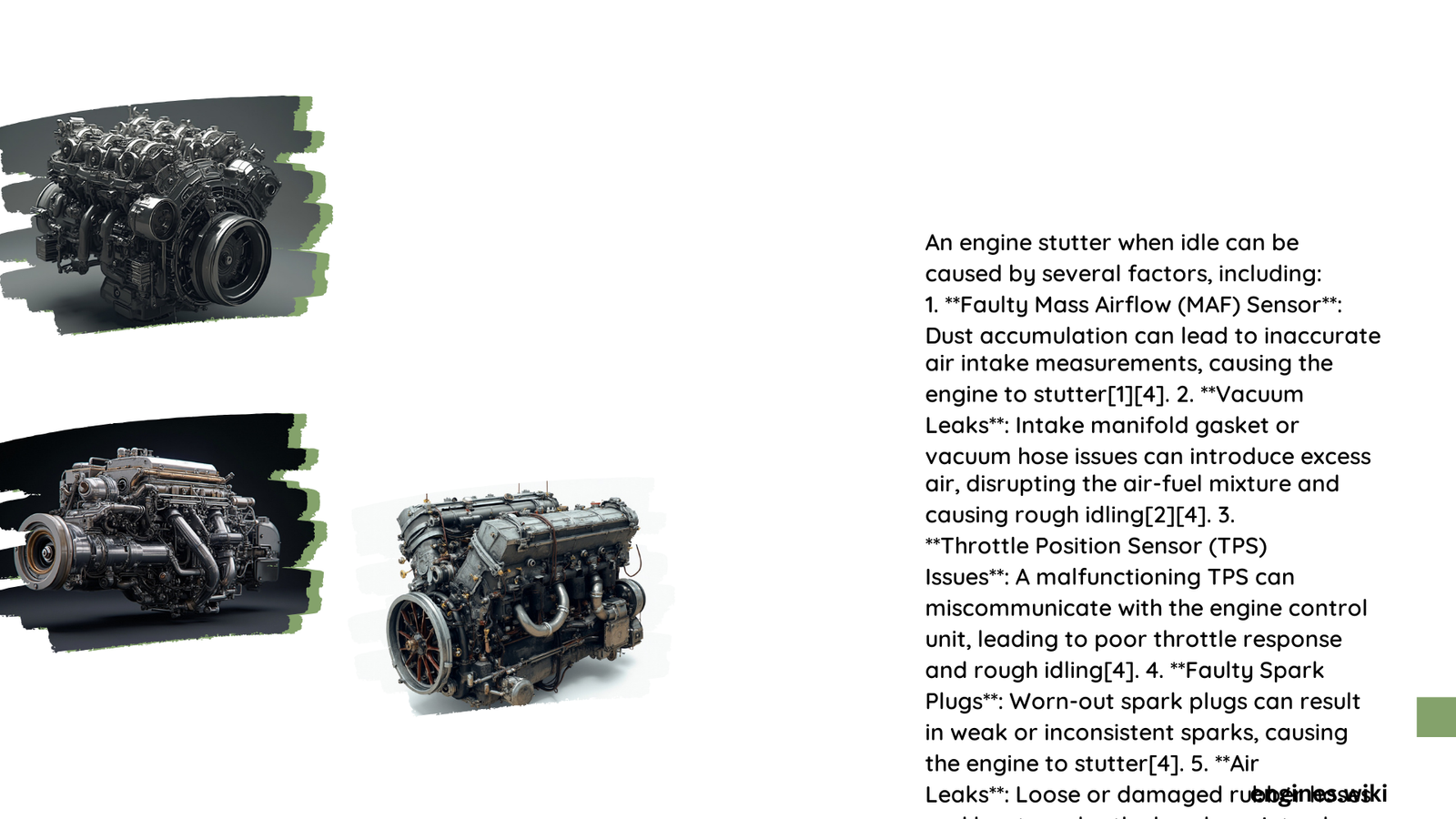Engine stutter during idle can be a frustrating and potentially serious automotive issue that signals underlying mechanical problems. When your vehicle experiences irregular performance at rest, it often indicates complex interactions between fuel delivery, ignition systems, and engine sensors. Understanding these intricate dynamics is crucial for accurate diagnosis and effective resolution of engine performance challenges.
What Causes Engine Stutter at Idle?
Why Do Fuel Injectors Malfunction?
Fuel injectors play a critical role in maintaining smooth engine operation. When they become compromised, several symptoms emerge:
- Clogged Injector Characteristics:
- Inconsistent fuel spray pattern
- Reduced fuel atomization
- Uneven combustion cycles
| Injector Condition | Performance Impact | Recommended Action |
|---|---|---|
| Partially Clogged | Mild Stutter | Clean Injectors |
| Severely Blocked | Significant Misfire | Replace Injectors |
| Electrical Failure | Complete Malfunction | Full System Diagnostic |
How Do Vacuum Leaks Affect Engine Performance?
Vacuum leaks introduce unmetered air into the engine’s intake system, disrupting the precise air-fuel mixture required for smooth operation. Key indicators include:
- Erratic idle speed
- Hissing sounds near intake manifold
- Reduced engine responsiveness
What Role Do Ignition Components Play?
Ignition system integrity is paramount for consistent engine performance. Potential failure points include:
- Spark Plug Degradation:
- Worn electrode
- Incorrect gap
-
Carbon buildup
-
Ignition Coil Problems:
- Electrical resistance variations
- Heat-induced breakdown
- Insulation deterioration
Diagnostic Strategies for Engine Stutter

What Tools Are Essential for Troubleshooting?
Professional diagnostics require specialized equipment:
- OBD-II Scanner
- Multimeter
- Vacuum pressure gauge
- Fuel pressure test kit
- Smoke machine for leak detection
How to Perform Step-by-Step Diagnosis?
- Initial Assessment
- Check basic maintenance records
- Verify fluid levels
-
Inspect air filter condition
-
Electronic Diagnostics
- Scan for stored trouble codes
- Analyze sensor data
-
Evaluate real-time engine parameters
-
Physical Inspection
- Examine spark plug condition
- Test fuel injector performance
- Check vacuum hose integrity
Estimated Repair Costs and Considerations
Repair expenses can vary significantly based on vehicle make and specific issues:
- Spark Plug Replacement: $100 – $300
- Fuel Injector Service: $200 – $1,000
- Vacuum Leak Repair: $50 – $500
- Comprehensive Diagnostic: $50 – $200
Prevention and Maintenance Tips
Regular maintenance helps prevent engine stutter:
- Use high-quality fuel
- Replace filters consistently
- Perform periodic system cleaning
- Address warning signs promptly
When to Seek Professional Help?
Consider expert intervention if:
– Stutter persists after basic troubleshooting
– Multiple system components show signs of failure
– Check Engine Light remains illuminated
Conclusion
Engine stutter at idle represents a complex mechanical challenge requiring systematic diagnosis and precise intervention. By understanding potential causes and implementing strategic troubleshooting, vehicle owners can effectively restore optimal engine performance.
